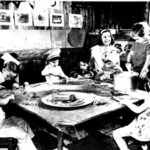In June 2010, California voters approved Proposition 14 establishing that the top two vote getters in a primary would advance to the general election regardless of their party affiliation. So two Democrats or two Republicans might face-off in the general election, and this has happened several times in 2012 and 2014 elections.
The January edition of the “California Journal of Politics and Policy” at the University of California, Berkeley, contained several articles and commentaries on the “top two” process.
The most common thought was that two primary elections were not sufficient to make strong, long-term judgments. Nevertheless, academics, reporters and the author of the proposition did not hesitate to share their thoughts.
The proponents of Prop. 14 felt it would open up primary elections, thus attracting more voters, give independent votes a voice in primaries, and force candidates or office holders to choose pragmatic action rather than ideological inertia.
According to Jonathan Nagler of New York University, in the June 2012 primary election, the first in which the “top two” was applied, voters appeared to behave similarly to the past with minimal influence of the new law.
“I find that surprisingly few voters crossed party lines, and relatively few who did so did so for strategic reasons. If such low levels of crossover continue, the impact of the top-two primary on candidate ideology will likely be small,” Nagler concluded after studying the actual election results.
Only 6.4 percent of all voters switched parties and those were more likely to be moderate members of either
major party. He could only speculate on why such a low number of voters were willing to cross over to the other party. And one reason, which he mentioned, was the newness of the opportunity.
Thad Kousser of the University of California, San Diego, studied the 2014 primary. He believes the “top two” process did help shape the field of candidates seeking statewide office and their tactics employed during the campaign.
However, he, just as did Nagler for 2012, found little evidence that “… the new rules did not, in the end, discernibly alter the outcomes of the 2014 primaries.”
Voter turnout for the primary was one issue on which Kousser focused. The June 2014 primary saw 4.4 million ballots cast, which was 25.2 percent of registered voters. The last time fewer voters came to the polls was the June 1960 primary. However, that year actual voters represented 62.8 percent of registered voters.
But turnout was below historical standards throughout the country and even the November general election saw voters express great disinterest. The last time fewer voters cast ballots in a regular general election was 1978 and again they represented 70 percent of registered voters.
Kousser did not attribute low turnout to the “top-two” process. Rather, the lack of competition in the major races probably got the attention of fewer voters. Also, he reasoned that when Gov. Jerry Brown signed legislation in October 2011 limiting citizen initiatives to the general election ballot, that also decreased attention in the primary elections.
“The move had the effect of stripping primary ballots of one of their prime attractions: the high-stakes fights over controversial citizen initiatives, and thus exacerbating the turnout differential between November and June,” Kousser wrote.
While no-party-preference candidate Daniel Schur did run for secretary of state, Kousser predicts that the major parties will begin endorsing candidates during primary campaigns as a way to focus their partisanships on one candidate and avoid the possibility that multiple candidates will split the vote, thus enabling two candidates from the other party claiming the top-two positions.
This nearly happened to the Democrats in the controller’s race. Betty Yee, a member of the State Board of Equalization, nearly edged former Assembly Leader John Perez by less than 500 votes. But Ashley Swearengin, Fresno mayor and Republican, was the leading voter getter. Fellow Republican David Evans was only 22,000 votes behind the two Democrats and might have out-polled them with more visibility.
“Perhaps more ironically, a reform designed to ‘lessen the influence of the major parties’ and ‘open up primary elections,’ has put a premium on the role that party leaders must play to restrict the number of choices that their members have in the primary, or court the sort of disaster that nearly befell Democrats in the controller’s race,” Kousser predicted.










